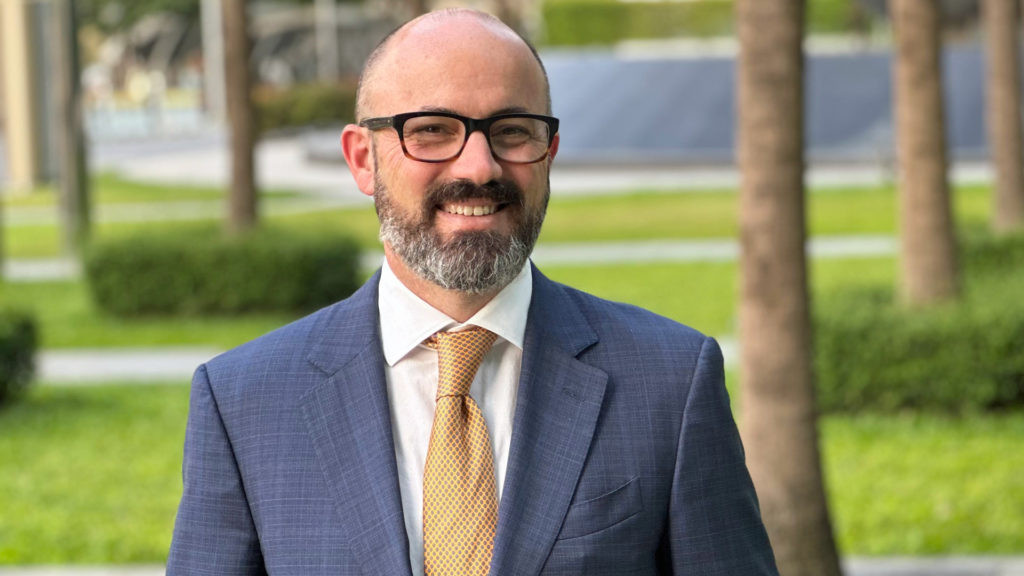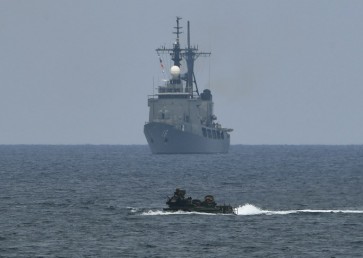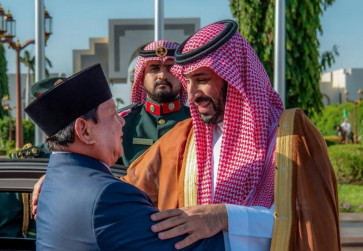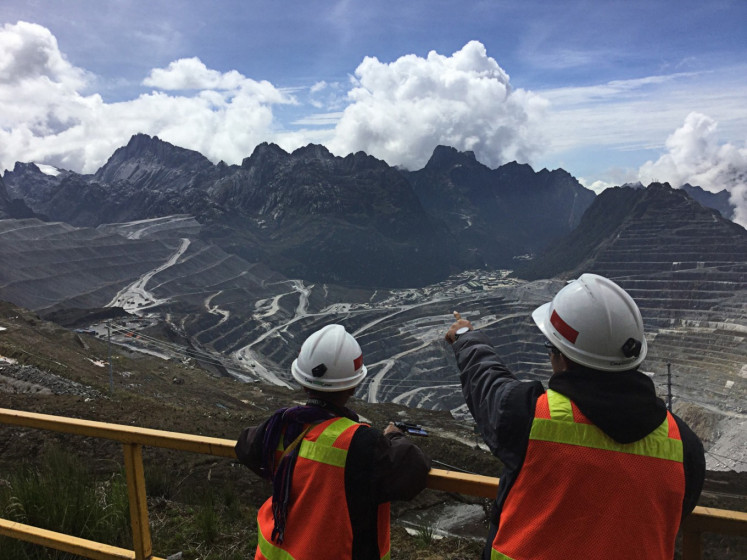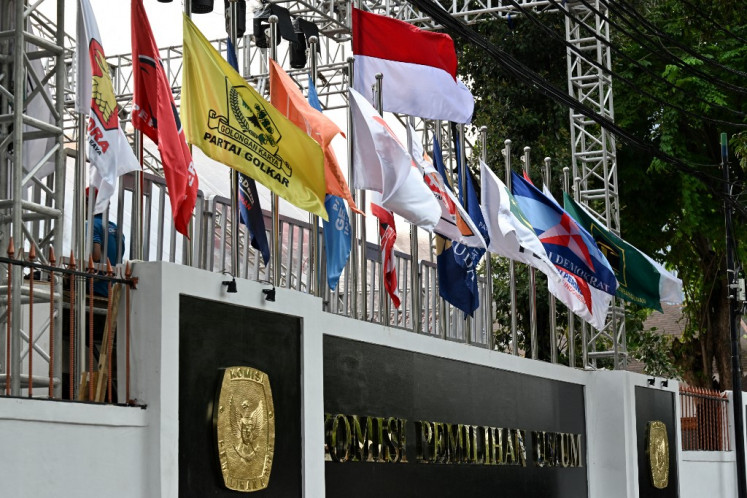Popular Reads
Top Results
Can't find what you're looking for?
View all search resultsPopular Reads
Top Results
Can't find what you're looking for?
View all search resultsTime to seize carbon capture potential, ANGEA says
Paul Everingham, CEO of Asia Natural Gas and Energy Association (ANGEA), which represents natural gas and energy producers, buyers, suppliers and companies across Asia, spoke to The Jakarta Post’s Divya Karyza on Aug. 2 about the race between Indonesia, Malaysia and Australia to become a carbon capture and storage (CCS) hub in the Asia-Pacific region.
Change text size
Gift Premium Articles
to Anyone
I
ndonesia could play a significant role for carbon dioxide (CO2) storage in Asia. The country has a potential CO2 storage capacity of 12.2 billion tonnes in depleted oil and gas reservoirs and saline aquifers, according to the Research and Development Center for Oil and Gas (Lemigas).
Southeast Asia’s largest economy is projected to receive 80 percent of the carbon capture, utilization and storage (CCUS) investment in the region by 2030, but as more countries develop their CCUS capacity, that share is projected to decline to about 60 percent by 2040, according to the International Energy Association (IEA).
Paul Everingham, CEO of Asia Natural Gas and Energy Association (ANGEA), which represents natural gas and energy producers, buyers, suppliers and companies across Asia, spoke to The Jakarta Post’s Divya Karyza on Aug. 2 about the race between Indonesia, Malaysia and Australia to become a carbon capture and storage (CCS) hub in the Asia-Pacific region.
Question: What is ANGEA’s experience regarding energy policy in Indonesia?
Answer: ANGEA represents about 15 big global companies that have energy assets throughout the Asia-Pacific region. Some of them have been in Indonesia for a hundred years, like Chevron. Indonesia already has a diverse portfolio of energy assets, but I want to stress that diversification is key. Not just from different energy sources but also from different countries, suppliers and different lengths of contract.
The other thing is to have in place stable financial, tax and economic settings, so that when companies invest, they can invest with certainty. Then, they’ll stay for the long term.
The government is banking on natural gas to pivot toward renewable energy. Has this initiative sparked a significant increase in investments in natural gas projects in Indonesia?
Natural gas is still an underdeveloped opportunity for gas in Indonesia. The Tangguh Train 3 LNG plant is still under construction. There is an abundance of opportunities to develop the gas industry in Indonesia, and I can deduce that the government’s giving signals that they’re open to developing more gas fields.
The government also showed a strong interest in CCS. They envision that in the scenario where they generate electricity from gas, it’ll be allocated for the cement, chemicals and fertilizer industries. Then, emissions from these gas plants will be reduced using CCS.
This gives me real optimism for the gas sector and the lower-carbon sector in Indonesia. It’s very topical in my discussions with the Indonesian government. They definitely want gas, they want the lowest-carbon options.
What is the government’s view on the prospects of deploying industrial CCS?
They’re exploring whether Indonesia could become a CCS hub. They’re bringing experts from Norway and Australia who have done CCS projects, and the many government ministries [are] participating in these workshops. We get a strong sense that it’s a real issue that the government’s taking very seriously.
But Indonesia is not the only country that’s giving some thought to that. Malaysia, Australia and Thailand are also looking at the prospects of themselves becoming the CCS hub.
It’s becoming a competition, as big emitting countries in Asia, such as China, India, Japan and Korea, are desperately looking for a place to capture and store their CO2, like Australia, which has land mass for storage, or Indonesia, which has a lot of geological storage. Malaysia’s got quite a lot. Thailand less so, but the country saw it as an economic opportunity, so this is a starting point.
As the discussion moves forward, Indonesia needs to make sure that the different industries – energy, chemical, cement and fertilizer, are all involved in the negotiation, because they are the target industries for industrial CCS projects.
How important is it for a country to become a CCS hub right now?
We need a lot of things to make net-zero happen, including energy efficiency, renewable energy and new forms of energy. A big chunk of removing the emissions that already exist will be from the hard-to-abate, heavy industries. That could be achieved through deploying CCS.
A CCS hub involves shared infrastructure that multiple CCS projects in the same region feed into, allowing the structure to decarbonize an entire industrial region.
Those countries in Asia I mentioned before urgently need to capture their CO2, so there’s a real opportunity, and now it’s time to seize it.
We have spent a lot of time in Japan and Korea, we spend a lot of time in China. They all say that CCS is a vital environmental project, and I think with the right conditions, it can be a vital economic and environmental solution for host countries like Australia, and in the future potentially Malaysia and Indonesia.
Indonesia is aware of the opportunity, and they’re definitely giving consideration to all the different options. […] Just like the US is becoming a CCS hub for North Atlantic, Indonesia could be the first mover in Southeast Asia and the Pacific.
It’s a real competition, Indonesia is right in the mix for being a CCS hub, probably it’s in the top two with the best prospects of becoming one, Indonesia and Malaysia. And then it could be Australia. But the time is now.
The Indonesian government is making all the right noises and saying all the right things to capture this rare opportunity. And it could lead to new huge industries being relocated to Indonesia and millions of jobs, economic benefits and economic growth.
Can efforts be made to push both industrial and upstream oil and gas CCS/CCUS, or should Indonesia prioritize one of them?
They should be prioritized together. CCUS in the petroleum industry is effectively using carbon dioxide to extract more gas or oil from the well and store the carbon dioxide there. This is important to minimize emissions from the upstream oil and gas sector.
But if the government aims to reduce emissions in other hard-to-abate industries, including cement and fertilizer, they need to oversee CCS implementation in these sectors by setting up a structure to conduct CCS in sandstone, saline aquifers, [or] pores you can inject carbon dioxide into. If they really want to bring down emissions from industries other than oil and gas, they need to do it in parallel.
They have released a rule on CCUS in the petroleum areas, but what I argue is, it is just as important, if not more important, to enact similar regulations to manage carbon capture applications for other industries, too.
Where does Indonesia’s energy transition efforts leave gas sector development?
I grew up in Australia, and Australia’s energy sector is built on the back of coal. Indonesia is more or less the same; both countries have a lot in common in terms of electricity systems. Now, Australia and Indonesia have gone down the path of decreasing their carbon emissions. Australia launched its carbon-reduction efforts by shutting down one of its coal-fired power plants and building a new gas powerhouse to replace it. That would mean that the emissions from the electricity would be 60 percent lower.
But they’re not just relying on the gas; they’re also building solar farms and wind farms. So during the day, when the sun is shining and the wind is blowing, electricity from these sources can be used in the system, and at night, when there’s no sun, the gas can come on.
I think that’s the same path Indonesia’s taking, they’re looking at renewable power generators.

